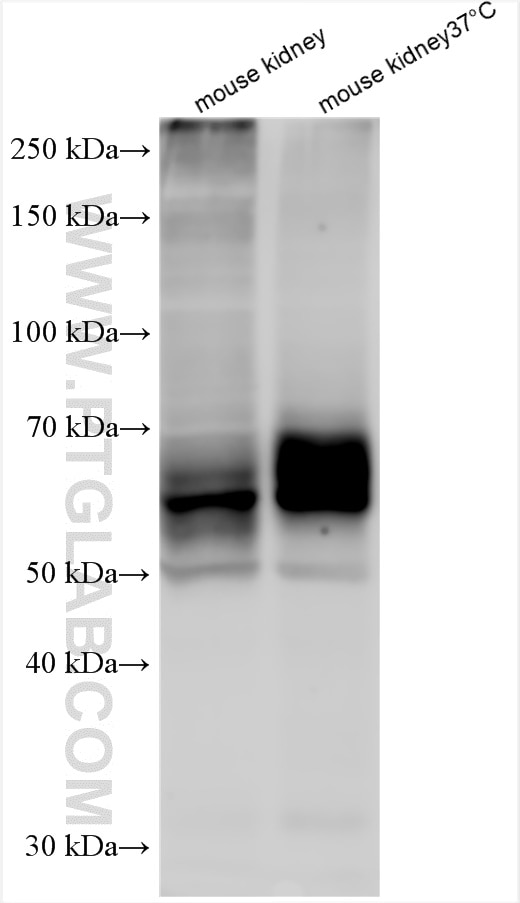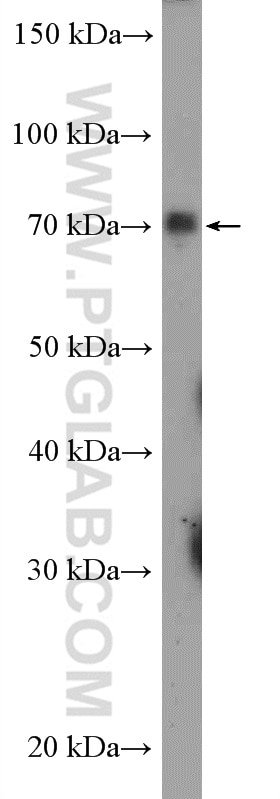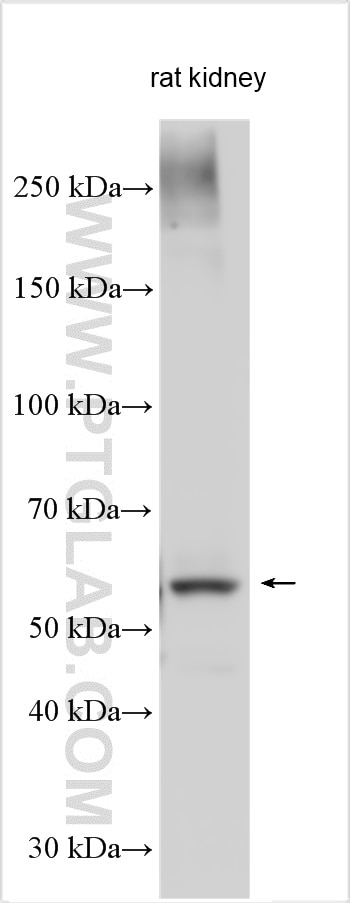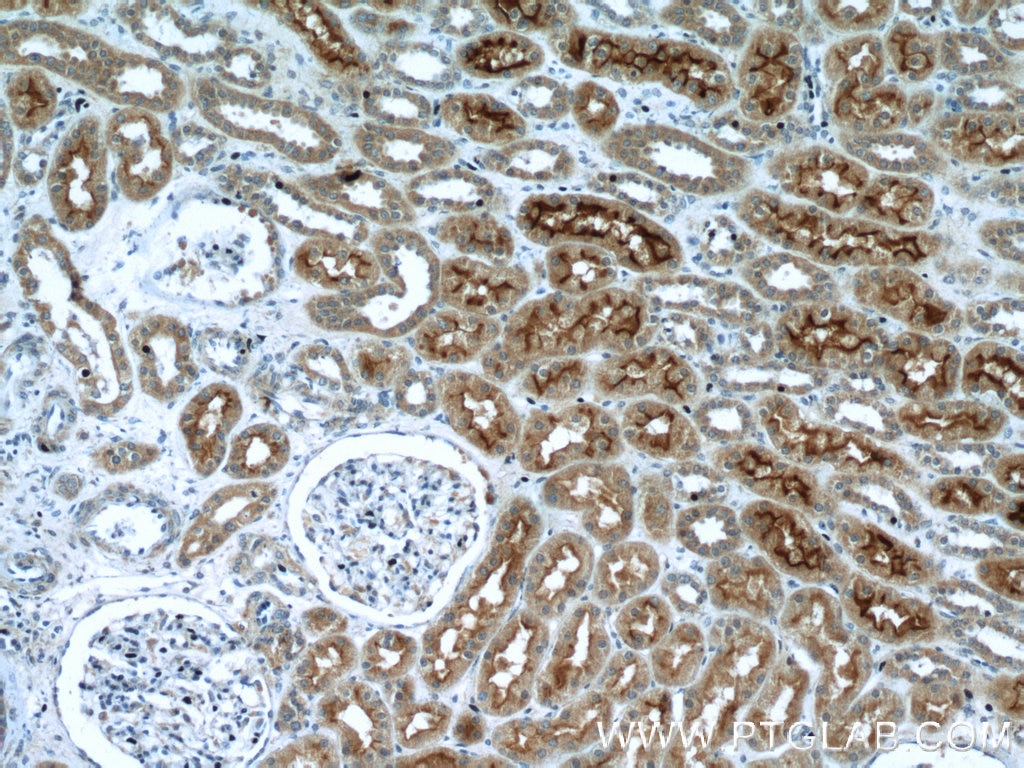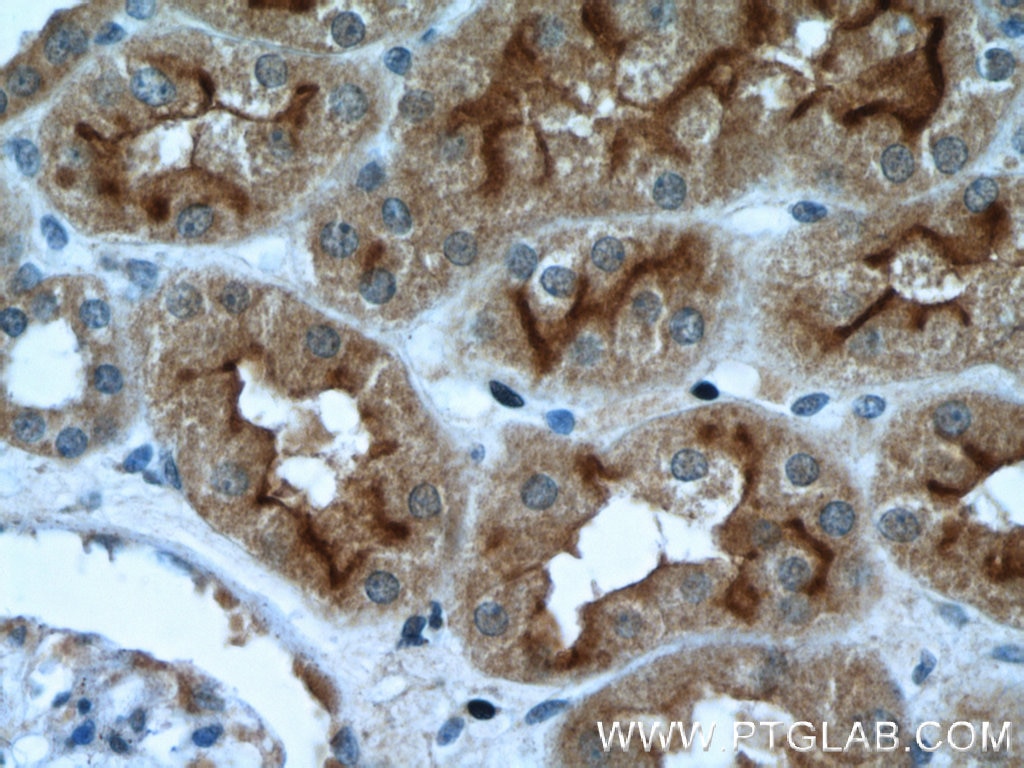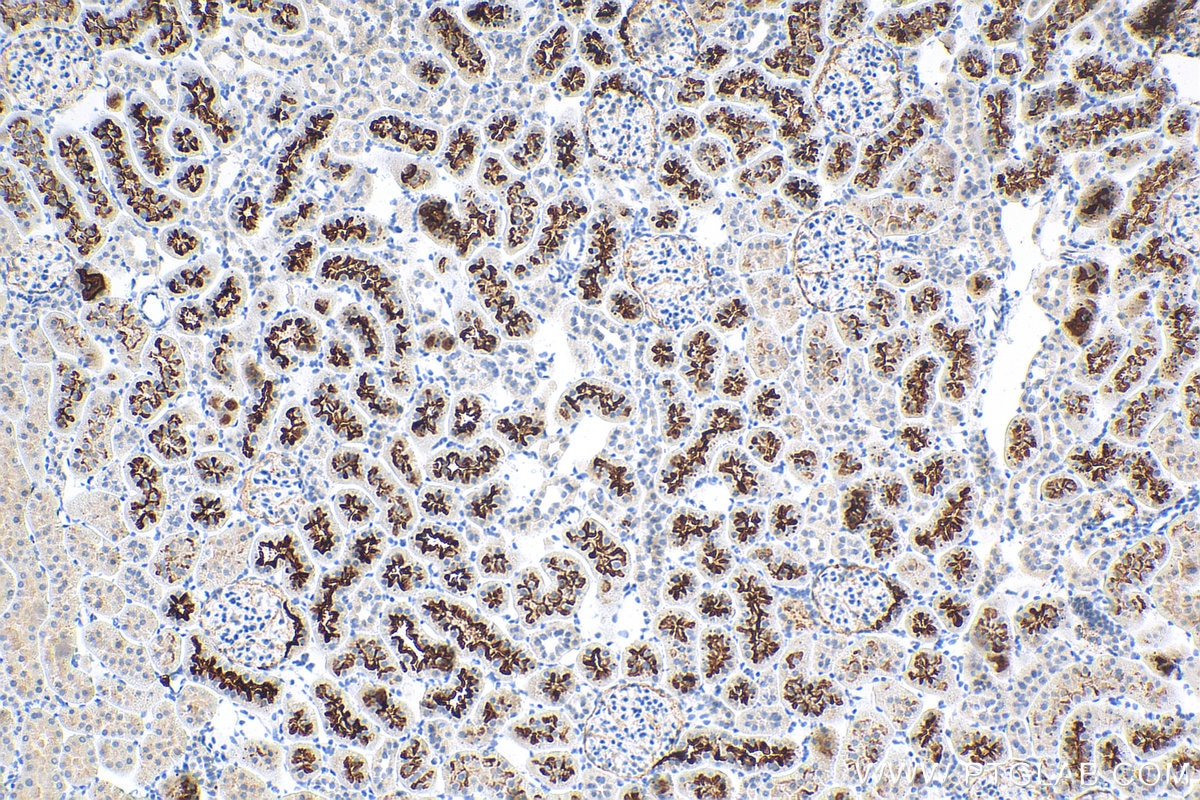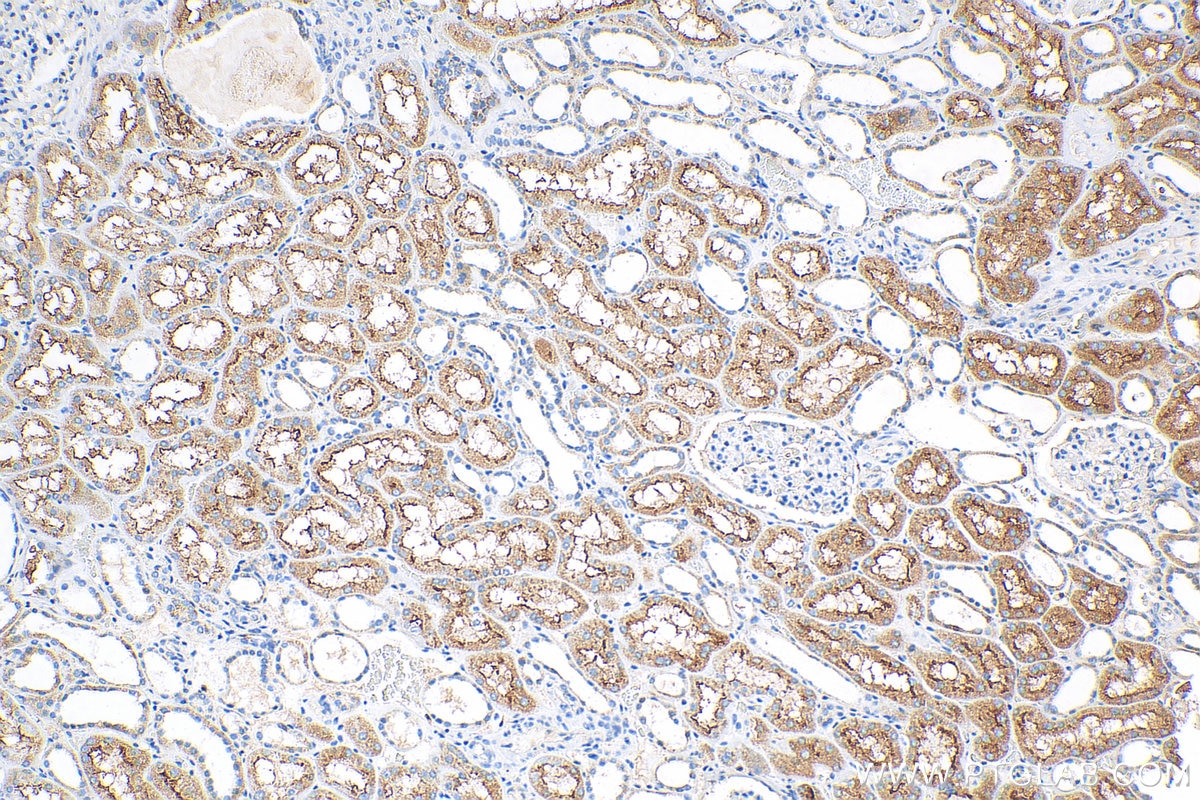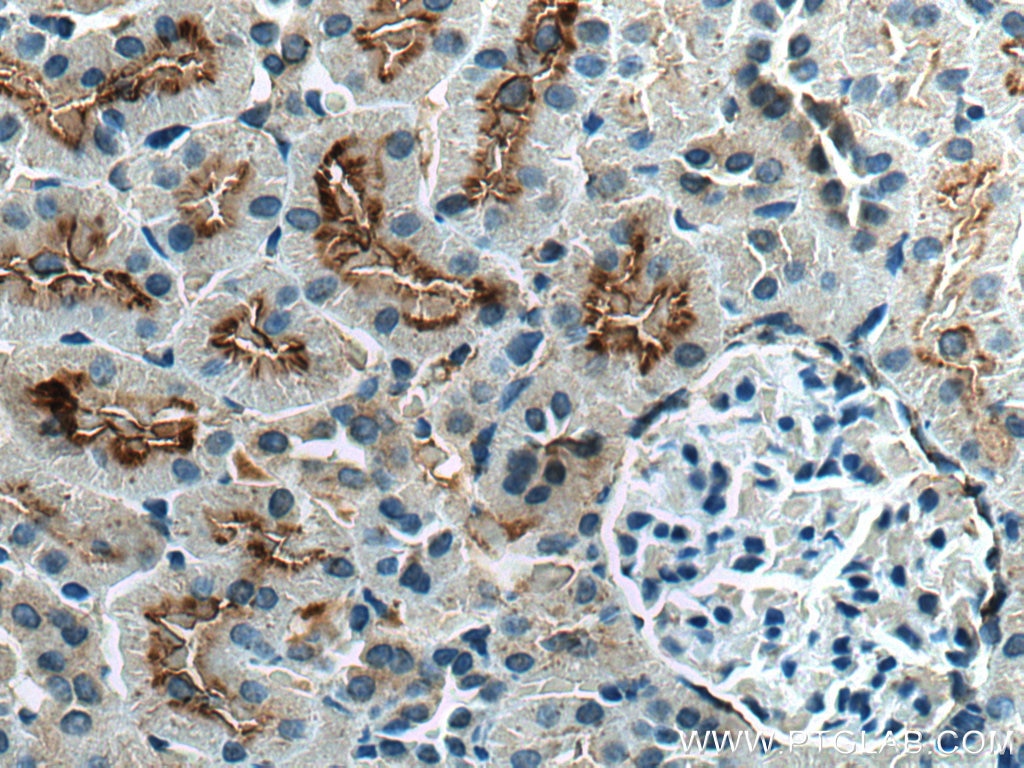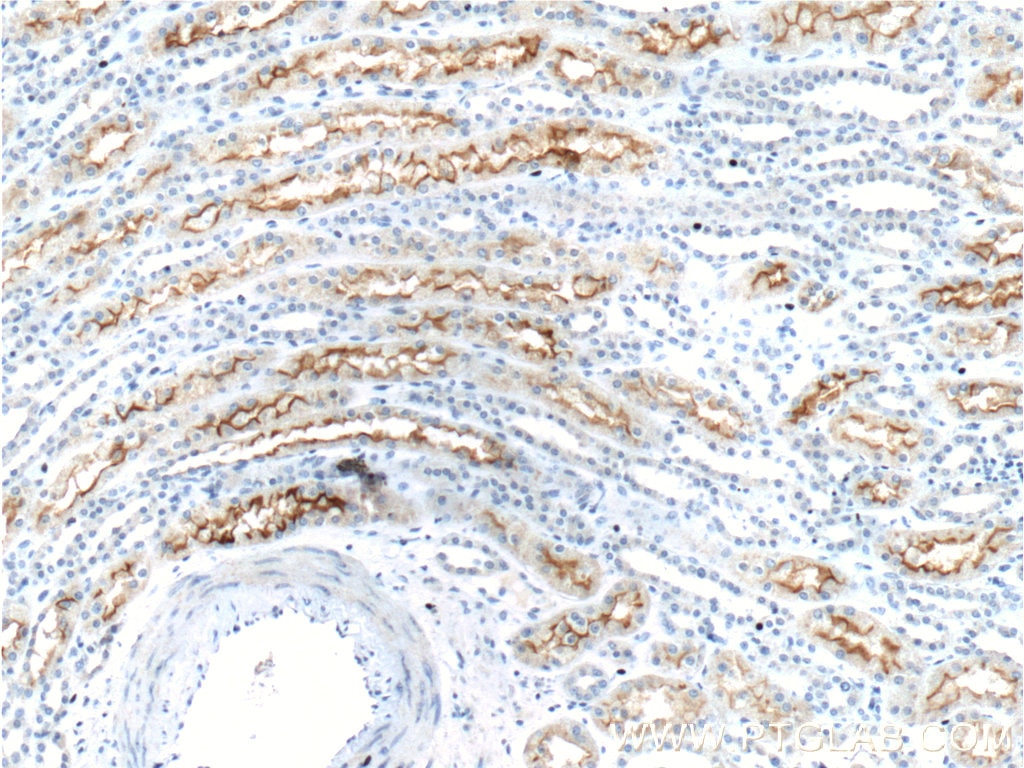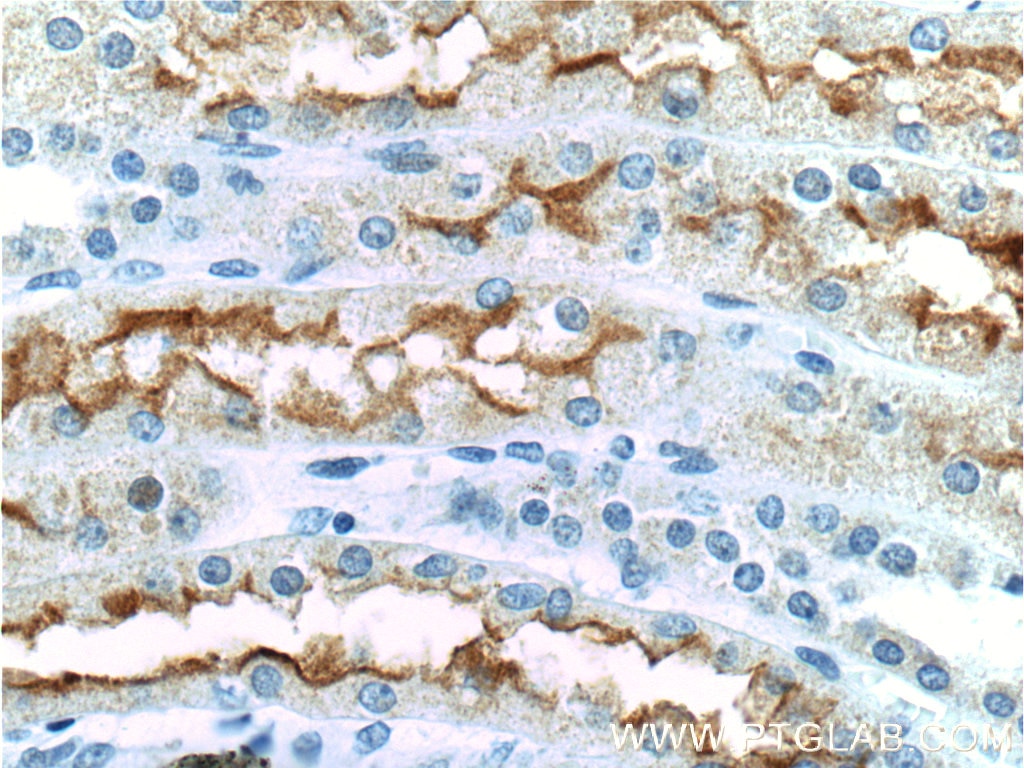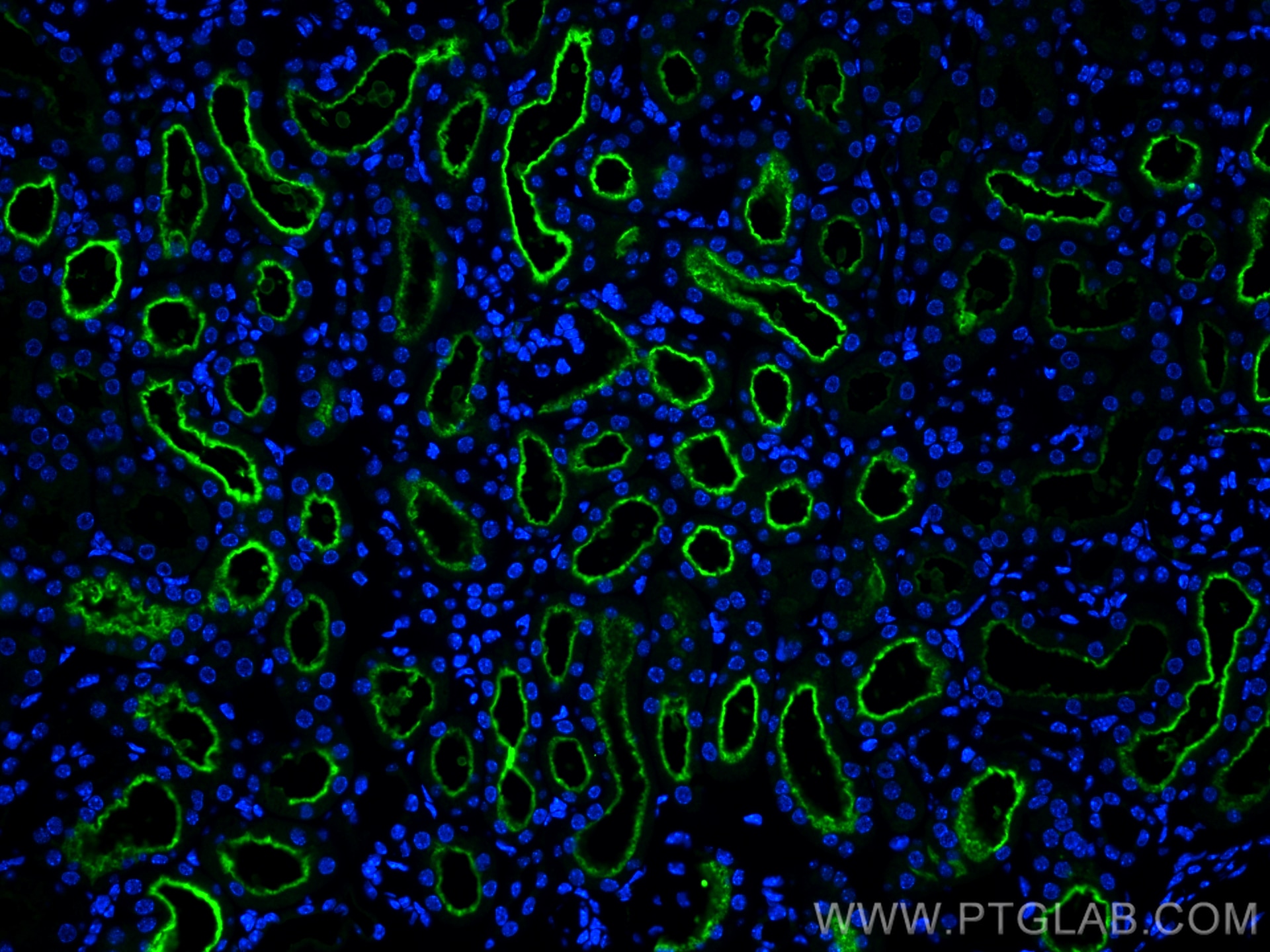Tested Applications
| Positive WB detected in | mouse kidney tissue, A549 cells, 37°C incubated mouse kidney, rat kidney tissue |
| Positive IHC detected in | human kidney tissue, rat kidney tissue Note: suggested antigen retrieval with TE buffer pH 9.0; (*) Alternatively, antigen retrieval may be performed with citrate buffer pH 6.0 |
| Positive IF-P detected in | mouse kidney tissue |
Recommended dilution
| Application | Dilution |
|---|---|
| Western Blot (WB) | WB : 1:500-1:3000 |
| Immunohistochemistry (IHC) | IHC : 1:200-1:800 |
| Immunofluorescence (IF)-P | IF-P : 1:50-1:500 |
| It is recommended that this reagent should be titrated in each testing system to obtain optimal results. | |
| Sample-dependent, Check data in validation data gallery. | |
Published Applications
| KD/KO | See 3 publications below |
| WB | See 21 publications below |
| IHC | See 15 publications below |
| IF | See 13 publications below |
| IP | See 1 publications below |
Product Information
24654-1-AP targets SGLT2 in WB, IHC, IF-P, IP, ELISA applications and shows reactivity with human, mouse, rat samples.
| Tested Reactivity | human, mouse, rat |
| Cited Reactivity | human, mouse, rat |
| Host / Isotype | Rabbit / IgG |
| Class | Polyclonal |
| Type | Antibody |
| Immunogen | SGLT2 fusion protein Ag19163 Predict reactive species |
| Full Name | solute carrier family 5 (sodium/glucose cotransporter), member 2 |
| Calculated Molecular Weight | 672 aa, 73 kDa |
| Observed Molecular Weight | 69-70 kDa |
| GenBank Accession Number | BC131542 |
| Gene Symbol | SGLT2 |
| Gene ID (NCBI) | 6524 |
| RRID | AB_2750601 |
| Conjugate | Unconjugated |
| Form | Liquid |
| Purification Method | Antigen affinity purification |
| UNIPROT ID | P31639 |
| Storage Buffer | PBS with 0.02% sodium azide and 50% glycerol , pH 7.3 |
| Storage Conditions | Store at -20°C. Stable for one year after shipment. Aliquoting is unnecessary for -20oC storage. 20ul sizes contain 0.1% BSA. |
Background Information
Sodium-glucose cotransporter 2 (SGLT2), encoded by SLC5A2, utilizes the electrochemical sodium gradient to transport glucose against the cell's internal concentration gradient. Mainly expressed on brush border membrane (BBM) of epithelial cells in the early segment of the proximal tubule, SGLT2 mediates most of the glucose reabsorption by the kidney overall. Inhibition of SGLT2 could improve glucose homeostasis of diabetic patients, which has been considered as a novel strategy for diabetes treatment.
Protocols
| Product Specific Protocols | |
|---|---|
| WB protocol for SGLT2 antibody 24654-1-AP | Download protocol |
| IHC protocol for SGLT2 antibody 24654-1-AP | Download protocol |
| IF protocol for SGLT2 antibody 24654-1-AP | Download protocol |
| Standard Protocols | |
|---|---|
| Click here to view our Standard Protocols |
Publications
| Species | Application | Title |
|---|---|---|
Circulation Sodium Glucose Cotransporter-2 Inhibitor Empagliflozin Reduces Infarct Size Independently of Sodium Glucose Cotransporter-2 | ||
Cancer Lett SGLT2 promotes pancreatic cancer progression by activating the Hippo signaling pathway via the hnRNPK-YAP1 axis. | ||
Mol Metab Sodium-glucose co-transporter2 expression and inflammatory activity in diabetic atherosclerotic plaques: Effects of sodium-glucose co-transporter2 inhibitor treatment.
| ||
Int J Mol Sci Redefining the Role of ADAM17 in Renal Proximal Tubular Cells and Its Implications in an Obese Mouse Model of Pre-Diabetes. | ||
Metabolism Sodium-glucose cotransporter 2 inhibition attenuates protein overload in renal proximal tubule via suppression of megalin O-GlcNacylation in progressive diabetic nephropathy. | ||
Front Pharmacol Empagliflozin Alleviates Hepatic Steatosis by Activating the AMPK-TET2-Autophagy Pathway in vivo and in vitro. |
Reviews
The reviews below have been submitted by verified Proteintech customers who received an incentive for providing their feedback.
FH Elina (Verified Customer) (03-04-2019) | The antibody is quite specific, used at a 1:200 dilution in mouse kidney. Comparison to a secondary only staining shows some background. Overall it appears to work well in paraffin embedded tissues, (5um thick).
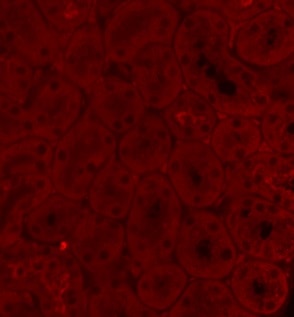 |
